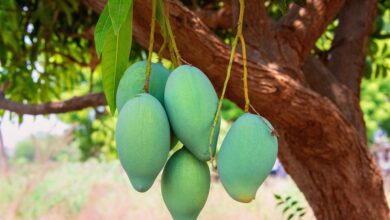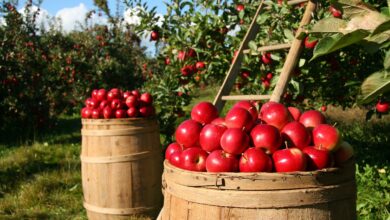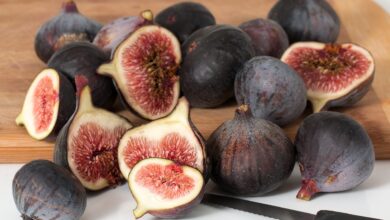Health Benefits of Quince
The Remarkable Benefits of Quince: An Ancient Fruit for Modern Health
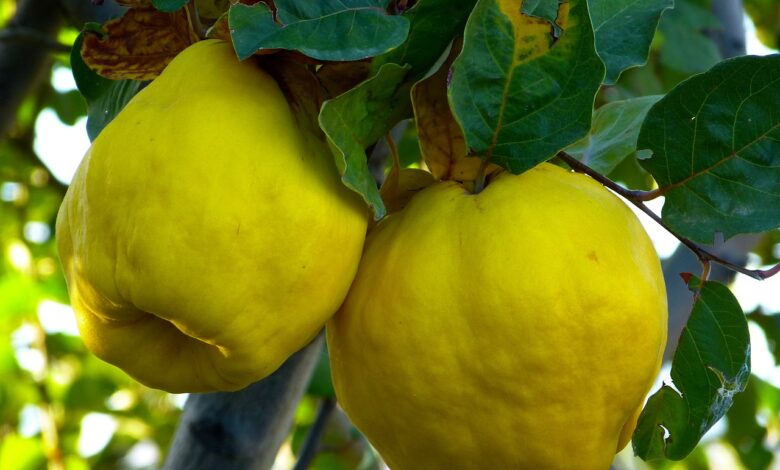
Quince (Cydonia oblonga) is a fruit that has been cultivated for thousands of years, treasured by various cultures for its unique flavor, aromatic fragrance, and numerous health benefits. Often overshadowed by more common fruits like apples and pears, quince is making a comeback as people rediscover its nutritional value and medicinal properties. In this article, we will explore the extensive benefits of quince, backed by scientific evidence and traditional wisdom.
Historical Background
Quince is believed to have originated in the Caucasus region, spreading to the Mediterranean and beyond. Ancient Greeks and Romans held quince in high esteem, often using it in rituals and culinary dishes. The fruit symbolized love and fertility, and its fragrant aroma made it a popular choice for perfuming rooms and clothing.
Nutritional Profile
Quince is a nutritional powerhouse, packed with essential vitamins and minerals. A typical serving of quince provides:
- Vitamin C: An antioxidant that supports the immune system and skin health.
- Fiber: Aids in digestion and helps maintain healthy cholesterol levels.
- Copper: Essential for red blood cell production and maintaining nerve cells.
- Iron: Vital for transporting oxygen in the blood.
- Potassium: Helps regulate blood pressure and supports cardiovascular health.
Additionally, quince is low in calories and contains a variety of bioactive compounds, including phenolics and flavonoids, which contribute to its health benefits.
Health Benefits of Quince
1. Rich in Antioxidants
Quince is a potent source of antioxidants, which protect the body from oxidative stress and inflammation. The phenolic compounds in quince have been shown to neutralize free radicals, reducing the risk of chronic diseases such as heart disease and cancer. Antioxidants also play a crucial role in slowing the aging process and boosting overall health.
2. Supports Digestive Health
The high fiber content in quince makes it an excellent choice for promoting digestive health. Fiber aids in regular bowel movements, preventing constipation and other digestive issues. Quince also contains tannins, which have astringent properties that can help soothe the intestinal lining and reduce symptoms of gastrointestinal disorders such as ulcers and irritable bowel syndrome (IBS).
3. Boosts Immune System
Vitamin C is a key component of quince, and its role in enhancing the immune system is well-documented. Regular consumption of quince can help the body ward off infections and illnesses. Moreover, the anti-inflammatory properties of quince can reduce the severity of allergic reactions and other inflammatory conditions.
4. Promotes Heart Health
Quince contributes to heart health in several ways. Its fiber content helps lower bad cholesterol levels, while potassium helps regulate blood pressure. The antioxidants in quince also protect the cardiovascular system by preventing oxidative damage to the heart and blood vessels. Studies suggest that regular consumption of quince may reduce the risk of atherosclerosis and other heart-related conditions.
5. Aids in Weight Management
For those looking to maintain or lose weight, quince can be a valuable addition to the diet. Its high fiber content provides a feeling of fullness, reducing overall calorie intake. Additionally, quince is low in fat and calories, making it a healthy snack option for weight-conscious individuals.
6. Enhances Skin Health
The antioxidants and vitamins in quince, particularly vitamin C, play a significant role in maintaining healthy skin. These nutrients help combat signs of aging, such as wrinkles and fine lines, by promoting collagen production and protecting against UV damage. The anti-inflammatory properties of quince can also help alleviate skin conditions like eczema and dermatitis.
7. Improves Respiratory Health
Quince has been traditionally used to treat respiratory conditions. The fruit’s anti-inflammatory and antioxidant properties can help soothe the respiratory tract, reduce coughing, and improve symptoms of bronchitis and asthma. Consuming quince or its syrup during cold and flu season can provide relief from throat irritation and other respiratory discomforts.
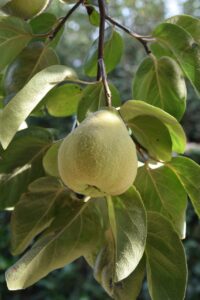
Culinary Uses of Quince
Quince is incredibly versatile in the kitchen. Its hard, astringent flesh becomes sweet and tender when cooked, making it suitable for a variety of dishes:
- Jams and Jellies: Quince is high in pectin, making it perfect for making jams and jellies that have a delightful, fragrant flavor.
- Baked Goods: Quince can be added to pies, tarts, and cakes, either on its own or combined with other fruits.
- Savory Dishes: Quince pairs well with meats, particularly lamb and pork, adding a sweet and tangy flavor to savory recipes.
- Compotes and Preserves: Cooking quince with sugar and spices creates delicious compotes and preserves that can be enjoyed with cheeses, meats, or as a dessert topping.
How to Select and Store Quince
When selecting quince, look for fruits that are firm and yellow, with a pleasant fragrance. Avoid fruits with blemishes or soft spots. Quince can be stored at room temperature until it ripens, after which it should be refrigerated to extend its shelf life.
Quince is a remarkable fruit with a rich history and an impressive array of health benefits. From its high antioxidant content to its digestive and immune-boosting properties, quince deserves a place in a healthy diet. Whether enjoyed in sweet or savory dishes, this ancient fruit offers modern health benefits that are hard to ignore. So, the next time you come across quince at the market, don’t hesitate to give it a try – your body will thank you.
